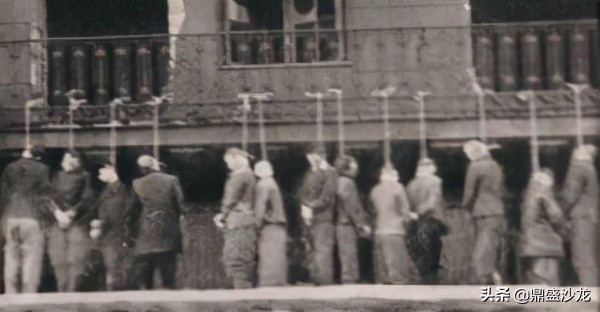On October 1, 1943, during World War II, the Polish underground carried out the boldest and most glorious assassination operation ever conducted. The underground managed to kill Ernst Weffels, a Gestapo officer working in Paviak Prison, on the streets of Warsaw, who was known for his cruelty to prisoners imprisoned there.

A Prisoner of Paviak who was hanged by the Germans in February 1944
During the German occupation of Poland during World War II, Germany often carried out mass executions, suppressed civilians and threw people into death camps, and German rule brought widespread famine and humiliation to Poland. The most ferocious of German rule were Gestapo officers, who wantonly arrested priests, representatives of Polish intellectuals, entrepreneurs and politicians, and later members of the Armed Resistance Movement, the Home Army.
The inscription of the Home Army "We will avenge Paviac"
In order to resist the brutal rule of Germany, the Polish underground organized several assassinations of German officers. In this operation, the Home Army targeted the Gestapo officer Ernst Wéfels, who was the head of the women's department in Paviak (the German political prison in Warsaw). Wéfels was known for his brutal mistreatment of prisoners, but this was not the direct cause of his assassination. While interrogating a woman imprisoned there, Wäfels discovered that letters were being passed between the Polish underground and The Paviac prisoners through the staff of the prison hospital, and in order to prevent communications from being disrupted, the Home Army Command decided to take action and ordered the assassination of Wéfels.
The task of assassinating Weyfers was undertaken by members of the home army of the "Agat". These people are known as the "anti-Gestapo". They were trained in assassination.
Flag of the Homeland Army
The whole operation begins with tracking and understanding the patterns of Weefels' daily activities. The intelligence services of the Home Army were involved in this work, and since the Germans were aware of the existence of the Polish underground organization and were very vigilant in their usual activities, they faced a difficult task. In occupied Warsaw, the Third Reich secret police usually rarely stayed in public places, as well as trying to avoid exposing their faces. Gestapo officials stationed in Warsaw were assigned personal bodyguards. These precautions were caused by early liquidation operations against the Germans, which made it increasingly difficult for poles to carry out assassination campaigns.
The Home Army managed to find Weefers. His reconnaissance work was led by Captain Alexander Kunitsky, a veteran who fought in World War I, the Soviet-Polish War of 1920 and the Third Silesian Uprising, and was a member of the Polish underground during World War II. Kunitsky learned that the Gestapo usually worked 24 hours, followed by a day off. Through daily observation, Kunitsky recognized a German similar to the description, and eventually, his identity was confirmed some time later by a former Paviak prisoner.
The participant of the operation, Maria Stypułkowska-Chojecka (center), was during the Warsaw Uprising
Command of the five-man liquidation team was handed over to Kazimierz Caldas, aka Orkan. The operation took place on 1 October 1943, and the assassinations would be carried out at the corner of Koszykowa Street and August 6th Street, near the Building of the Gestapo Office in Warsaw. The liquidation team gave a briefing at Orkan's apartment at 9:00 a.m., and at 11:00 a.m. the operatives left the apartments one by one and received a gun at Ujazdorf Park at 11:40 a.m. The members of the action arrived at the designated place as planned.
Ernst Wéfels left home at 12:02. Two minutes later, two Poles confirmed his identity through a previously agreed gesture. Okan quickly pounced on him, firing several shots at Weffers from close range, but Weeffers did not fall. Instead, he began to flee towards Uyazdorf Park. Caldas fired several more shots until the magazine was empty.
Action participant Caldas
Caldas replaced the magazine and continued his search for Welfers. He found the injured Weiffels on a bench in the park and without hesitation shot him in the head and took his carry-on documents. The rest of the team opened fire on the approaching Germans, after which they got into a car that answered them and quickly left. And successfully escaped the scene.
Operation Wäfels was one of the most high-profile operations carried out by the Polish Homeland Army during World War II. Its planning and implementation were perfect, the task was successfully completed and, more importantly, the Polish side did not have any losses, which is very rare. Usually in similar liquidation operations, Polish underground organizations will have casualties.
Operation Wäfels was also a heavy blow to the Germans. Through this operation, the Home Army made the German secret police in Warsaw uneasy and insecure. The operation also boosted the morale of members of the Home Army and civilians in Warsaw.